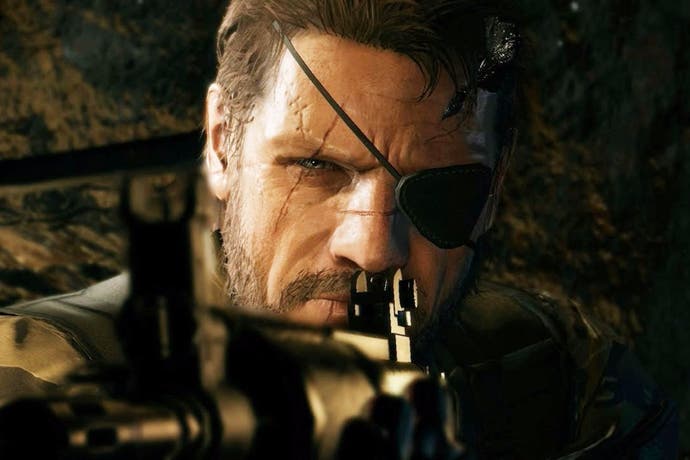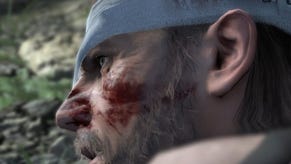Face-Off: Metal Gear Solid 5: The Phantom Pain
Kept you waiting, huh?
Kojima Productions may be no more, but it ends its tenure under Hideo Kojima's watch with characteristic ambition. Metal Gear Solid 5: The Phantom Pain takes Peace Walker's mission-based structure, and propels itself onto current-gen with an open world setting, materials-based lighting and a suite of superb post effects. Both PlayStation 4 and Xbox One (and indeed the two last-gen editions) benefit from the adaptability of the Fox Engine too - but as the series' final narrative link is put into place, does any one console give us the definitive experience?
Up front, it's worth stating that all console versions offer up the same core feature-set, and a practically identical world design. However, it's the delivery in resolution and frame-rate that really divides PS4 and Xbox from their last-gen counterparts. The Phantom Pain strikes an unusual middle ground in this sense; factoring in the ageing PS3 and Xbox 360 hardware, the game's visuals on newer consoles may not necessarily bring us to the cutting-edge here - but it does qualify PS4 and Xbox One for a rare combination of open-world, 60fps gameplay.
And on PS4 - as covered in our hands-on - this is rounded off with a native 1920x1080 resolution. The key divide here between this and Xbox One's 1600x900 delivery is in some pixel shimmer on sharp edges. For example, an escape from the hospital ward early on shows us some harsh lighting on window blinds on Xbox One, with the upscaled resolution producing more visual noise overall. And likewise, long views of Mother Base's rigid structure as we approach by helicopter produces more shimmering - though outside of these cases, the FXAA post-process pass on each clears up most jagged edges, and the results are surprisingly close in play.
It's worth noting Xbox One runs on its day one patch 1.01 in our tests here (counting in at 726mb), while PS4 remains unpatched - though both game install sizes total to around 27GB. [UPDATE 01/9/15 10:45am: a re-test on PS4 patch 1.01 doesn't show any improvement at the stress points covered later in this article.] Even with the disparity in resolution, the core asset-work is nigh-on identical between the two; geometry is like-for-like, while draw distances are matched when galloping at speed through Kabul's desert wastelands. Minor pop-in is evident on rocks, shadows and trees far into the distance, but these always switch to a higher level of detail as we draw close - and the trigger point is in precisely the same spot for both PS4 and Xbox One.
Accepting everything else as equal, the game's core visuals differ in two ways on current-gen. First and foremost, PS4 makes use of a skin-shading technique known as subsurface scattering, while Xbox One does not. A detailed normal map is in place on both consoles, and in Snake's case this puts all his wrinkles and scars on show. However, on PS4 this is used as a base layer, on top of which another is placed to filter oncoming light, and also blend shadows more naturally across his face. This still allows us to see these raw details, but lighting conditions dictate the extent to which they're visible - much like the way actual human skin tissue layers up to diffuse light.
For Xbox One in its current state, this extra pass is essentially missing in many cases - as you can see in our zoomers below. This means the normal map looks rougher with all surface details presented bare (and in many ways matches the look of Xbox 360 and PS3 versions, albeit with a higher resolution map). It must be stressed that this only affects extreme character close-ups, but it's a strange omission given Xbox One's parity in character detail with PC and PS4 in Ground Zeroes - both of which benefitted from the subsurface scattering effect.
The second difference is in its post-effects. Both PS4 and Xbox One offer an excellent suite of photographic effects, simulating camera depth of field, lens flare, and exposure levels with HDR when entering and leaving interiors to face brightly lit areas. However, a drop in resolution for Xbox One's per-object motion blur is noticed, as best seen in this still shot. This manifests in cut-scenes and during high-speed chases, where a horse's galloping hooves leave behind a pixelated trail on Microsoft's platform. It's tough to catch by eye, but the effect blends in correctly with the object's contours on PS4, with no aliasing.

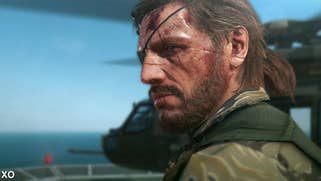





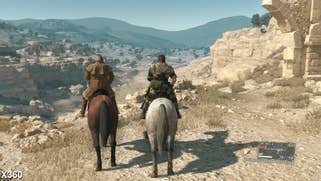
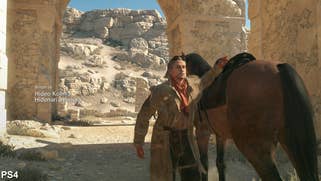

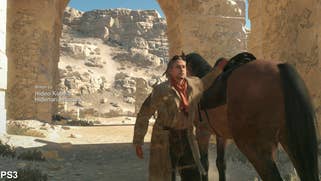



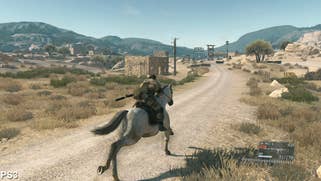
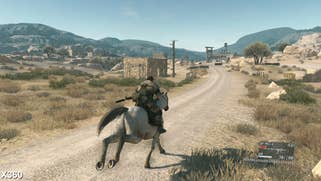
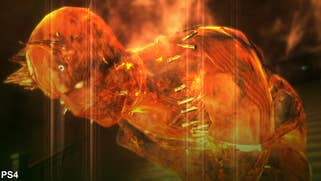
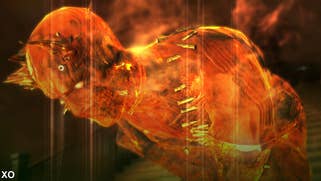
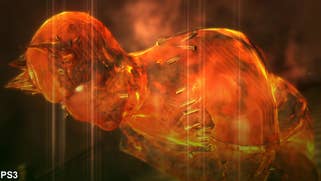
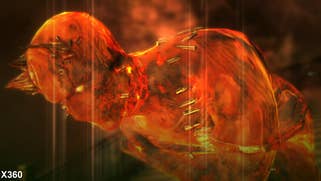








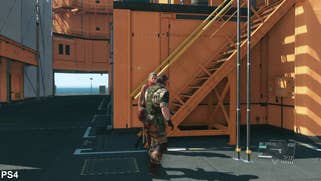
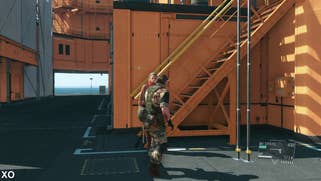
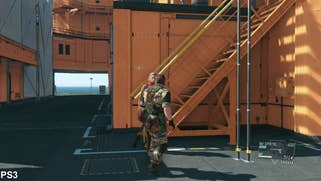

A slight discrepancy in texture filtering is also noted, again putting PS4 ahead in clarity by a half-step across ground. However, it's fair to say neither have much to boast about in this area; this is low grade texture filtering that falls close to the standards of trilinear filtering. We're keen to see what the PC release can do here to improve the blur we see on console textures - and likewise for the obvious shadow filtering cascade on both, which kicks in at the exact same point.
As far as the PS3 and Xbox 360 versions are concerned, we begin to see some more significant changes. The incredible draw distances on current-gen are curtailed, and instead we get plenty of visible pop-in on rocks and trees as we canter across the Kabul map. Screen-space ambient occlusion is used on all versions, but the dithered effect is much more pronounced on last-gen - while shadows across the world runs at a far lower resolution overall. Each natively renders at around 992x720 too, leaving us with a far blurrier final output - in some ways helping to hide its deficit in geometry draw distance.
Switching between PS4 and PS3, it's clear the core assets are essentially the same, barring a drop in mapping quality. Some effects are missing or heavily dialed back - such as motion blur in gameplay - but character models are otherwise identical, and the world's building blocks and features are all but paired. The compromises do stack up though, and it's hard to recommend the last-gen versions if you're considering investing in a new console any time soon. Especially once we factor in its frame-rate.
Indeed, on the one hand we're looking at a very solid 60fps on PS4 and Xbox One during play, with v-sync always engaged. There are exceptional moments as we traverse though wastelands where a stutter kicks in, a single frame drop that can occur on either console. But based on our play across the first ten missions, this 60fps target doesn't give way otherwise, and when it does it often goes unnoticed. Metal Gear Solid 5 is remarkable in this sense, given the apparent difficulty most current-gen titles have had in hitting this number while still offering a free-roaming gameplay design.
However, we do see limits to the engine on PS4 and Xbox One. Cut-scenes run at a practically faultless 60fps, even at points you'd presume would cause it some strain. Bizarrely, on rare occasions we get hard locks to the 30fps line on PS4, and at around 50fps on Xbox One - an unusual example being close-ups of Kaz Miller's face with his glasses on (spotted on two occasions). We had to search far and wide to pin such moments down however, and these are momentary anomalies in the face of an otherwise faultless 60fps game.
On the last-gen front, frame-rate is where things take a nasty turn for overall playability. PS3 and Xbox 360 really struggle to match up to even a half-refresh 30fps target here, with its alpha effects and huge draw distances causing frequent drops below. In fact, PS3 suffers the most, with several cut-scenes unfolding at a locked 20fps, while 360 fluctuates between 20-30fps a little more freely. However, the differences blend somewhat during open world gameplay. Both have v-sync engaged, and the end result in gameplay feels heavily compromised by the magnitude of the game's level design - and again the frame-rate number fluctuates wildly between 20-30fps during any serious gunplay.
It's clear the game is built to factor in last-gen hardware, and it's something of a miracle how much the Fox Engine keeps in place on PS3 and Xbox 360. The fundamentals of design are so close, and The Phantom Pain gives us one of the last cross-gen titles we'll see to use the same technology on all platforms. But it's clear it's time to move on; the benefits of a smooth 60fps compared to an unstable 20-30fps have a huge affect on the game's handling - and while the content is the same, the enjoyment of interacting with Kojima's world is clearly hampered by the older technology.
Metal Gear Solid 5: The Phantom Pain - the Digital Foundry verdict
Hideo Kojima's last Metal Gear is a success for PS4 and Xbox One owners - an open-world, Fox Engine-powered finale to Big Boss' arc that corners a near-unshakable 60fps on each. Between the matching draw distances, physically-based lighting and excellent use of photographic effects, we have parity between the two versions in most areas. Put side-by-side, these two are largely identical during play, though several points do go in favour of PS4.
A full 1080p picture on PS4 is one such merit, while Xbox One upscales from 1600x900 to produce a slightly softer result at range - albeit with results that are still respectable. Lower resolution motion blur on Xbox One also causes more banding on objects in motion, while extreme close-ups on characters reveals an absence of a subtler, subsurface scattering pass present on PS4. Curiously, this was in place for Ground Zeroes on Xbox One, but it's since gone missing - meaning character complexions can appear slightly more coarse up close.
All of which makes PS4 a fair recommendation on current-gen, though Xbox One holds up in every other aspect and with the game in full flight, the experience is very, very similar indeed. Both are also in a different league entirely to the PS3 and Xbox 360 editions; the most glaring downgrade here being the sluggish, 20-30fps range of performance on last-gen (and sometimes lower). It can't be stressed enough; Metal Gear Solid 5 may have been built with older consoles in mind, but the ambition clearly outweighs these consoles' capabilities in The Phantom Pain.
After enjoying a locked 60fps on newer consoles, it's very hard to go back - even if the core feature-set is the same on all platforms. However, the real test of the Fox Engine's scalability lies on PC, a version Konami is working overtime to polish by launch today - with 4K support and added effects promised. Provided it's as neatly optimised as Ground Zeroes on PC, this could well be the definitive release, and we'll be back soon with a full overview of what it brings to the table.
